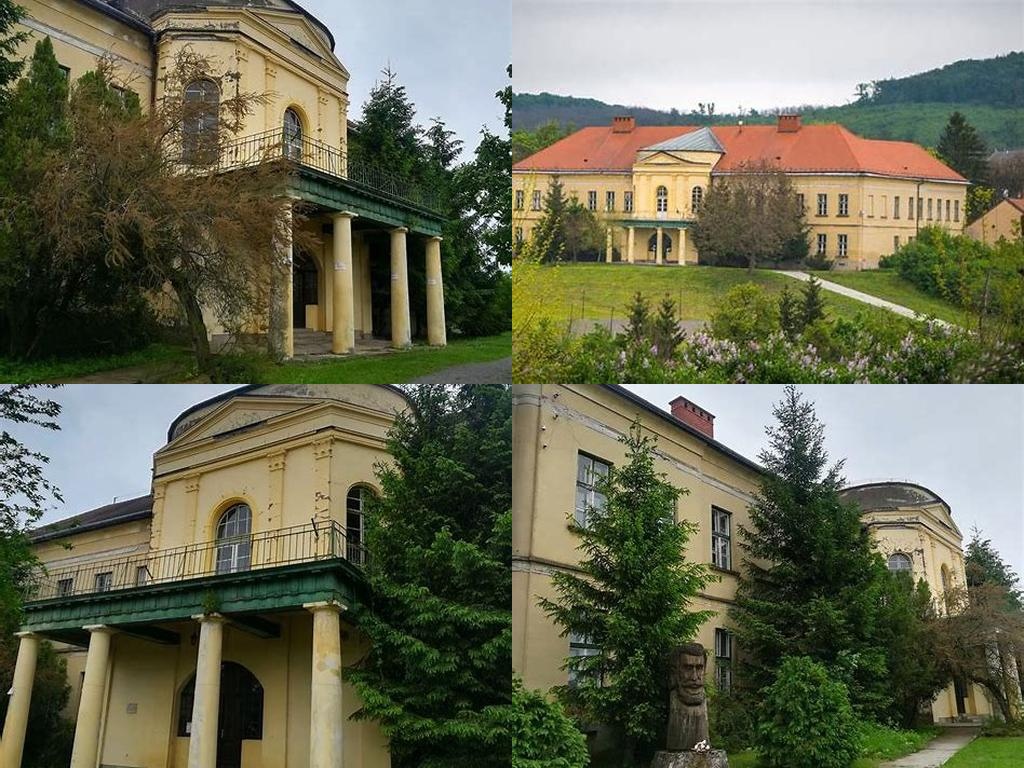
Andrássy-kastély in Monok is the sort of place where a winding path in the countryside suddenly opens into history. Tucked in a quiet northeastern corner of Hungary, the village of Monok itself is a sleepy delight, but it’s the castle that truly steals the show. The moment you see its soft yellow façade framed by chestnut trees, a sense of faded grandeur settles in — this is more than just another stately house on a hill. If you enjoy lingering among echoes of the past, the castle and its park invite closer inspection.
The castle owes its notoriety and a good chunk of its charm to the Andrássy family, an aristocratic clan with deep roots in Hungarian and European history. If the name rings a bell, maybe that’s because of Gyula Andrássy, once the Prime Minister of Hungary and later Foreign Minister of Austria-Hungary, or perhaps because someone has mentioned the extravagant Andrassy Avenue in Budapest. The family seat at Monok is humbler but arguably more atmospheric. Built at the turn of the 18th century, the castle sits on the foundation of a medieval mansion, and as with all houses that have watched centuries parade by, it bristles with stories. Pass through its oval-shaped cour d’honneur (a fancy term for the U-shaped sweep in front), and you’re stepping in the same spaces as revolutionaries, poets, and dignitaries who once defined the raucous spirit of 19th-century Hungary.
Linger at the entrance, and it’s hard not to be drawn to the subtle details. The symmetrical wings, the classical columns, the rare mix of late Baroque and early Neoclassical elegance—everything about this place speaks to a changing world, an old society trying to keep pace with new ideas. The castle’s main corpus is stately without being overbearing, as if comfort and conviviality were as important as impressing visitors. On a spring afternoon, sunlight pours through enormous windows, streaking the parquet floors and illuminating faded frescoes that hint at a much grander era.
What will you actually find here? The Andrássy-kastély houses a museum dedicated to the family’s legacy and to the history of the village of Monok. Step inside and you’ll find rooms dressed with vintage furniture, intricate clocks, and the type of tapestries you might expect to see in a period film. There’s an almost lived-in feel to the place, as if a member of the Andrássy family might wander down the corridor at any moment. Best of all, the museum doesn’t shy away from quirkier exhibits: you might spot portraits of lesser-known cousins in meticulous uniforms, household oddities from centuries past, or old documents penned in impossibly elegant script. It’s a place for curious souls who appreciate both historic grandeur and the odd, everyday traces of life left behind.
Many visitors head straight out into the parkland as soon as they’ve wandered through the house. And it’s easy to see why. The castle’s garden—laid out with orderly paths, creeping vines, and fountains that often surprise you around a corner—is a wonderful showcase of how landscape served as both art and utility. While parts of the grounds have been lovingly restored, others retain a quieter, wilder atmosphere. Old trees lean towards each other as if trading secrets. It’s easy to slip away with a book for an hour, or to lose yourself following butterfly trails while the village church bells toll in the background. Allegedly, it was under these very trees that some of Hungary’s most heated political debates in the 19th century first percolated.
Although the Andrássy-kastély is quieter than some of Hungary’s better-known castles, it offers something different: an unhurried, intimate encounter with the region’s tangled past. The staff, often local historians or volunteers, are more than willing to share anecdotes about the Andrássys, the village, or the building itself—stories you won’t find written on plaques. The castle is also a starting point for exploring the slow pleasures of Zemplén county, whether you’re winding your way through vineyard-covered hills or venturing toward volcanic ruins nearby.
In the end, the main allure of Andrássy-kastély is the sense of presence it bestows. Walk its halls and you walk with Tiszas, Andrássys, and generations of villagers. Let the landscape drift over you and see if you don’t find yourself wondering what moments of laughter or intrigue unfolded beneath these high ceilings, or who rested here on a drowsy summer afternoon before you. It’s a spot for those who would rather journey through time than just check another landmark off their lists, and for anyone willing to let the past — and a few chestnut petals — settle lightly on their shoulders.





